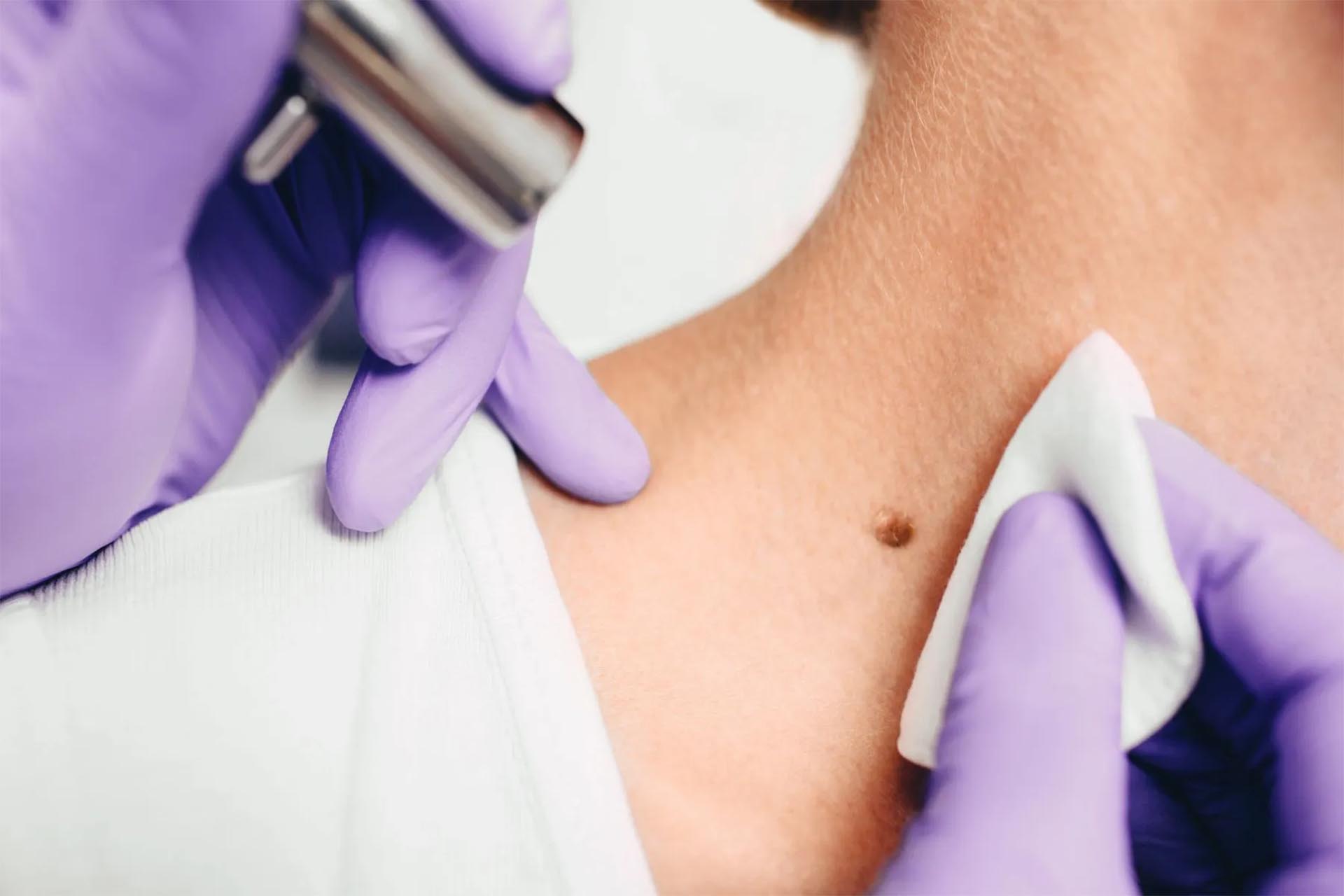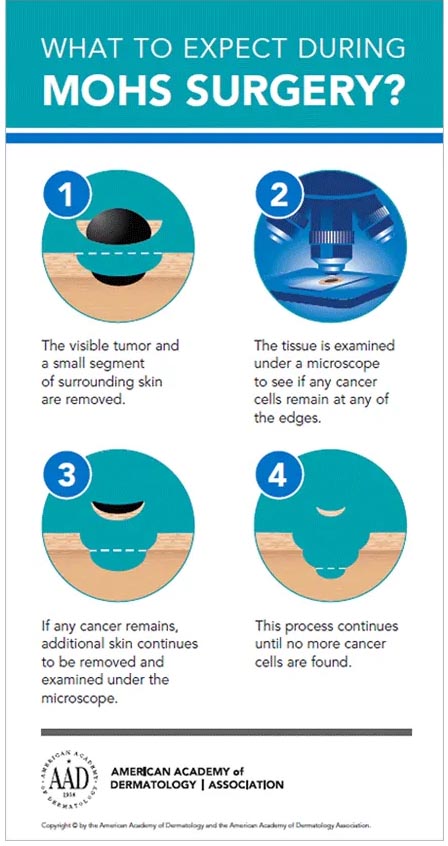Skin Cancer Treatment Options
The Skin Cancer Center of North Georgia offers a range of treatment options for patients diagnosed with Basal Cell Cancer (BCC) and Squamous Cell Cancer (SCC).
ED&C x 3 (Electrodessication and Curettage)
This procedure should be reserved for Basal Cell cancers that are superficial and nodular. It involves anesthetizing the area with lidocaine and then scraping the tumor with a curette and then dessicating (burning) the area with a cautery machine. This procedure is performed 3 times and takes about 10 minutes. No specimen is sent to the laboratory. The resultant scar is permanently white, therefore this is best used in areas where cosmesis is not a concern. The cure rate is 90-93% for superficial or nodular BCC’s.

Excisions
This procedure involves marking the tumor and then outlining a 3-5 mm of normal appearing skin. The area is then anesthetized. The tumor and the margin of skin are then removed and sent to the lab to be processed. The surgical site is sutured closed. The lab report will come back in 3 – 7 days. The cure rate is 93%. This procedure is appropriate for basal cell cancer and squamous cell cancer located in an area that has adequate amounts of excess skin, so that the margin of skin may be taken, such as the arms, legs, trunks, neck, or cheek.
Mohs Micrographic Surgery
This specialized procedure was developed by Dr. Fredric Mohs in the 1930’s, and over the past 2 decades has become the gold standard for removing certain types of skin cancers in certain locations. Basically, the tumor is removed in the office, under local anesthesia, without any normal appearing skin. Then it is mapped, inked, stained, and processed by frozen section in the office laboratory to examine 100% of the specimen margins. The Mohs surgeon examines the tissue under the microscope, while the patient waits in a separate waiting room. If there is tumor remaining, then the surgeon knows EXACTLY where to take the next specimen. This procedure continues until the tumor is completely removed.
This ensures that all the “roots” of the skin cancer tumor are out. The cure rate is 99% for tumors that have not been treated before and 95% for recurrent tumors.
The patient is then returned to the operating room, where the defect can be cosmetically repaired using a flap or skin graft, or simply sutured closed. Sometimes, the area of skin removed is so small that the wound may be left to heal by itself. On average, the patient is here for 3 hours.
Not every basal cell or squamous cell cancer meets the qualifications to have Mohs micrographic surgery. We follow the Appropriate Use Criteria, established by the American Academy of Dermatology Association in 2014, to determine the need for this procedure.
- Tumors in the H-zone of the face (central face, eyelids/canthi, eyebrows, nose, lips, chin, ear, and periauricular area), as these areas are prone to have tumor recurrence and there is not much room to take a margin a normal skin for a simple excision.
- Tumors with aggressive histology
- BCC – Basosquamous, morpheaform and micronodular
- Many SCC
- Patients under 40 years of age
- Tumors on the hands, feet, genitalia
- Tumors anywhere on the body greater than 2 cm
- Tumors with poorly defined borders
- Recurrent tumors

Radiation
This procedure requires that the patient go to the radiation center 5 days a week for 5-6 weeks. It is much more expensive than any surgical procedure. The cure rate is 90-93%.
At the Skin Cancer Center of Central Florida, every patient is unique and must be treated on an individual basis. The decision to perform any of the described surgical methods will be made with the patient and their family as part of the team.
You can learn more about skin cancer and skin cancer treatment options from the American Academy of Dermatology Association: www.aad.org/public/diseases/skin-cancer

